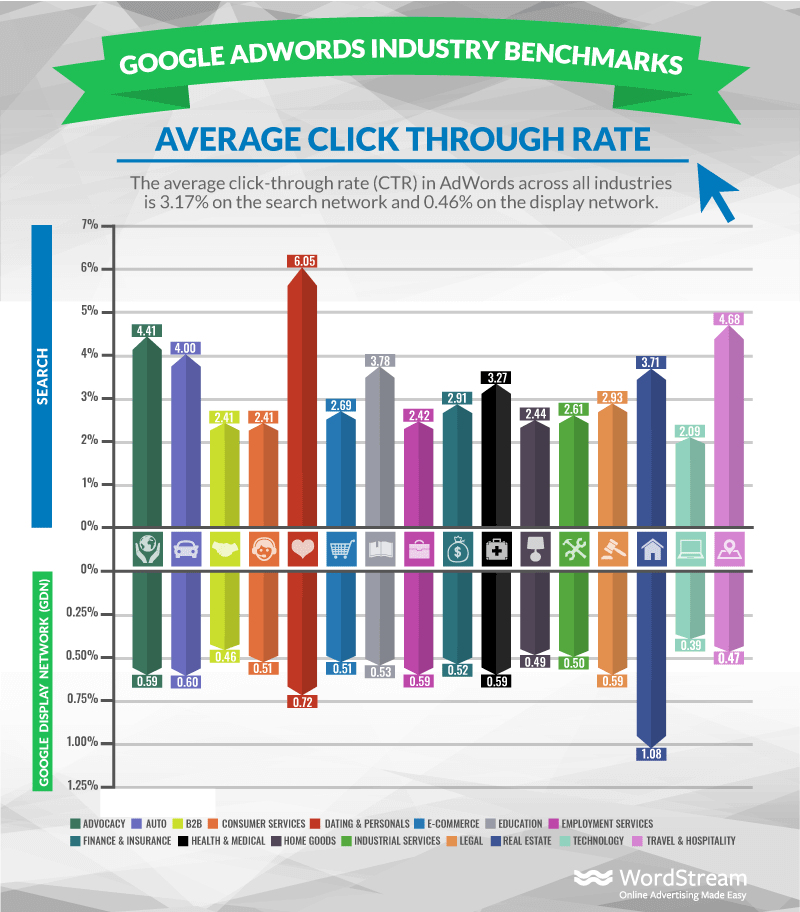10 Worst Beginner Blogging Mistakes You Don’t Want To Make
Starting a blog can be overwhelming, especially when you’re not sure what you should and shouldn’t be doing. To make the most of your time and effort, it’s important to avoid common mistakes. In this fast-paced world, it’s crucial to be organized and plan ahead to build traffic and achieve success as a blogger.
As a blogger, you want to use your time wisely. Proper organization and the right planning can help you get your blog on the road to building traffic and success.
So, to save you time and effort, make sure you avoid these common top 10 blogging mistakes at all costs. Doing so will not only make sure you don’t have to go back and waste time but will help your blog achieve success if implemented correctly.
Blogging is not just something you do without thought. If you want to make a blog, you need to properly plan and develop a personal blogging strategy.
Ok, let’s look at the common problems beginner bloggers run into.
Common problems faced by new bloggers
1. Not Using Header Tags – Crime You Really Shouldn’t Commit

The Problem: When you write a blog post, you shouldn’t just be writing without any formatting.
Header tags are used to structure your content not only for your audience but for search engines as well.
You need to be aware of and use proper header tags to organize and space out your content.
The Fix: Essentially, header tags are used for the titles and subtitles of your page. Header tags are part of the HTML language and range from H1 to H6.
An H1 header generally appears the biggest and is the most important title, while H6 is the smallest and carries less importance.
You need to use header tags properly and in the right places. Typically, you would only have one H1 tag for the main title of your page. For all the subtitles you would then use H2 tags, and if you have subtitles within those you would use H3, and so on.
Note that H1 tags should not be overused, and it is good to only use them once on your main title.
2. Not Using Images – You can’t tell a story without showing the pictures
The Problem: Images are an important part of any good blog and you should be using them.
Images add a refreshing break from just plain text. Without images, your blog can look unattractive and like a wall of text.
Also, it is a well-known fact that images boost shares. One study by Buzzsumo analyzing 100 million Facebook updates showed images have more than twice the engagement:

As you can see, images are a very important part of any blog.
The Fix: Too often new bloggers just aren’t sure of where they can get images and if they are allowed to use them. You can check out this guide on where to find images for your blog for a list of places you can get images for free or paid.
Use images frequently to help support your points. Regular images will make your posts more attractive, and easier to read.
3. Not Focusing On A Blog Topic: Ship without a compass

The Problem: A blog should be a collection of information that focuses on a specific theme.
Some bloggers just starting don’t realize this and make their posts too broad and irrelevant to their niche.
You shouldn’t have posts that are random and that aren’t useful to your target audience. Without a properly targeted blog topic, you risk not being able to define and relate to a specific audience.
The Fix: Before you start your blog, you should decide and find your blog topic.
If you have already started your blog, decide what your blog’s theme is and start focusing on that.
Another advantage of focusing on a specific topic is that it’s possible to get more traffic. When you niche down and focus on a specific topic, it can be easier to compete for a specific market rather than competing for the ones that everyone else is trying to cover.
4. Not Using Basic SEO: website without basic SEO is like a movie without a trailer

The Problem: If your site is not optimized properly for search engines, you could be missing out on valuable traffic opportunities. With over 3.5 billion searches per day on Google alone, you can get an idea of the potential there is.
SEO means search engine optimization and essentially means making your site look good to search engines.
Here are some common SEO mistakes new bloggers can run into in 2023
- Not using header tags properly or using too many H1 tags.
- Having bad navigation structure.
- Having bad design.
- Having a slow site.
The Fix: You don’t have to be an SEO expert and there are some simple things you can start using right away.
There are many factors that search engines use to grade a site and determine how well it will rank in their results pages. To get an idea, you can check out this list of Google ranking factors by Brian Dean from Backlinko. If you want to learn about SEO, Backlinko is one of the best places on the web to learn about it.
While you don’t need to follow every SEO strategy in the book, you should at least implement some of the essentials.
As mentioned above, make sure you are using proper header tags. Make sure your site has a good navigation structure and is designed well. For design, there are many great WordPress themes out there that can make this easier.
You should also use a good SEO WordPress plugin like Rank Math. Rank Math does a lot of the hard work for you and makes SEO easier to manage.
5. Bad Design : Bad design is like a bad script, can spoil the whole experience
The Problem: Having bad design can be more than just bad for SEO.
Bad design is a major factor why people leave your site and can increase your bounce rate.
If your site is hard to navigate or looks like it is illegitimate it is easy to understand why your visitors aren’t staying for long.
The Fix: With WordPress, the design is not very hard to get right. There are thousands of beautiful themes out there that will make your site look good.
The best WordPress themes are designed to look good, SEO friendly and fast.
Best WordPress theme for SEO : GeneratePress, Kadence
Using a good WordPress theme will help give you a head start and make your task easier.
If you want, you can also hire a designer using a website like 99designs. You can also check out other design resources on the blog tools page.
The last thing you can do is choose a good web host. Choosing a good hosting company will help you ensure that your site will run quickly, and stays running without issues.
Best WordPress Hosting in 2023 : Kinsta, WP Engine, Cloudways, Flywheel
6. Not Organizing Your Time: Trying to shoot a movie without a schedule
The Problem: Not organizing your time can lead to poor content or time-wasting in unproductivity.
Some new bloggers may either not spend enough time on their posts, or spend too much time trying to get them perfect.
The Fix: You should spend enough time creating quality posts for your visitors. Trying to do too much and producing thin content will do more harm to your blog than good.
The other side of this is spending too much time on posts. There is a time when you need to be practical and publish your post. Don’t get obsessed about trying to be perfect.
However, it is good to edit your posts so spend 30 minutes or so cleaning it up and making corrections.
7. Infrequent Blog Posts: A watched pot never boils
The Problem: Not having a frequent posting schedule can be detrimental to your blog’s success.
More posts can lead to more traffic. One study shows that blogs that posted 16+ times per month got 3.5 times more traffic than those posting 0-4 times per month.
It is clear that the more you post, the more visitors you will get.
The Fix: Developing a blogging schedule and planning out your posts will help you create more content.
Using a planning plugin like the Editorial Calendar plugin will help you map out your blog posts and get organized.
Also, brainstorm some different types of posts you can use. Sometimes, fresh post ideas can help you come up with more content that you can use on your blog. To help you get started, here is a list of 25 blog post ideas you can look at.
- How-to guide on a specific topic that is relevant to your niche
- A review of a product or service related to your niche
- A list of resources or tools that are useful for your readers
- An interview with an expert or influencer in your niche
- A personal story or experience that is relatable to your readers
- A round-up of industry news and updates
- A case study of a successful project or campaign
- A Q&A session with readers, answering their most frequently asked questions
- An in-depth analysis of a trending topic in your niche
- A tutorial on a skill or technique related to your niche
- A comparison of different products or services in your niche
- A “day in the life” post, giving readers a behind-the-scenes look at your business or industry
- A “how-I-got-started” post, sharing your personal journey and lessons learned
- A “frequently asked questions” post, answering common questions about your niche or industry
- A “best of” post, highlighting the top resources or products in your niche
- A “worst of” post, discussing common mistakes or misconceptions in your niche
- A “why-I-started-blogging” post, sharing your personal motivations and goals
- A “future-of” post, discussing predictions and trends in your niche
- A “year-in-review” post, recapping the past year’s events and developments in your niche
- A “how-to” post, teaching readers a new skill or technique
- A “top-10” post, listing the top resources or products in your niche
- A “controversy” post, discussing a current debate or issue in your niche
- A “success story” post, highlighting a real-life example of success in your niche
- A “learning from failure” post, discussing a past failure and the lessons learned from it
- A “behind the scenes” post, showing what goes on behind the scenes of your blog or business
8. Not Defining Your Audience: Shooting in the dark
The Problem: Not defining your audience can lead to problems getting traffic.
Knowing your audience will help you create posts that attract more visitors. The more people who require the information that you are providing, the more chance you will get people coming to your site.
To better understand your audience and identify potential opportunities you can ask yourself:
- What problems is your target audience facing?
- What questions are they asking?
- What are they searching for?
Knowing what there is a demand for will help you create helpful posts that your audience will appreciate.
The Fix: There are several things you can do to identify and learn about your audience.
Community Sites
Websites, apps, and tools on the web will help give you insights into your audiences’ tendencies and needs.
You can find questions your audience is asking by going to question answering communities like Quora, stackexchange. Search for your topic and look at the questions being asked. This is a good way to get useful ideas for blog posts.
You can also look at forums to see what questions people are asking and what is popular in your niche.
Search Volume
Knowing what your audience is searching for will allow you to create posts that attract traffic. Once you know what keywords are getting the most searches, you write posts based on those keywords. An easy way to do this is to use Google’s keyword planner to see the search numbers and competition level for a keyword.
To do this, sign into the keyword planner or create an account and search for a keyword. The tool will tell you how many searches that keyword gets, the competition level, and related keywords.
This tool is really useful as you will see related keywords and get other ideas for blog posts.
Social Shares
You can also get a further understanding of your audience by looking at social shares.
The amount of social activity for a keyword can give you an indication of the popularity of that keyword.
A useful tool for seeing social activity is BuzzSumo.
To get information on your keyword, enter it into the search bar on the website.
Buzzsumo will now show you related articles and the number of shares they get.
9. Low-Quality Posts: Measure twice, cut once
The Problem: Some new bloggers make the mistake of trying to post too much and not paying attention to the quality of their posts.
Producing thin content that is poorly written and doesn’t provide value to your readers can do more harm to your blog than good. Content is one of the most important for your blog.
Not only will it be unattractive to your visitors but it also won’t help you get far with search engines.
The Fix: Take enough time per blog post to create truly useful content for your readers.
Do your research before you post and offer lots of good quality information that your readers can take advantage of.
Also, you should make sure your posts are of a good length. Long-form content has become popular because it works. Longer articles attract more shares and increase user engagement.
Not only will your users benefit from longer content but you will also get better results with search engines.
Search engines are now focusing on the quality of content and see value in longer posts. This study by serpIQ shows that the top-ranking results on search engines have longer word counts:
You don’t necessarily have to consistently write over 2,000 words. However, as you can see longer posts will benefit your blog in multiple ways. Aiming to write posts with at least 1000 words is a good goal to set for yourself.
10. Neglecting Blog Promotion
The Problem: Some beginners make their blog posts, publish them, and think that is enough. The result of this type of thinking is usually not getting much traffic to their site. They then get discouraged and wonder why they aren’t getting any traffic to their blog.
If you aren’t actively promoting your blog, chances are you won’t get much traffic as a result. Blog promotion is important and should be part of your daily schedule.
A big part of becoming a blogger is connecting with other people and other blogs. This helps you not only promote your blog but also helps you learn and develop your blog.
The Fix: There are many things that you can easily get started with to promote your blog.
To start, you should create social profiles for your page on at least Facebook, Twitter, and Google Plus. When you publish something on your blog, you should also post it to your social media profiles. Social media is a valuable way to build a following to your blog and drive traffic.
Also, guest posting on other blogs can benefit your blog and boost traffic. Not only will you get exposure to the other blog’s audience but you will also get a link from their site.
Here are some other ways you can promote your blog:
Post at the right times: Strike while the iron is hot
Try to post at the time of day when most users are active.
Email Signature Link: With a link to your blog in your email signature you can let people know about your blog and increase your traffic.
Ads: If you feel it is right for your blog you can increase traffic with paid ads on search engines (Google Adwords) or social media.
For a more complete list, you can look at this list of ways to promote your blog and increase traffic.
A good marketing strategy is an important part of every blog and should not be overlooked.
Conclusion
If you are just beginning your journey as a blogger, being aware of these common mistakes can help you get a head start.
When you start blogging, there are a lot of things to know. Knowing what will hold you back is important so you can avoid wasting effort and time.
One of the most important things you can do as a blogger is to properly plan and organize your blog.
If you need help setting up your blog for the first time, you can visit this tutorial on starting a blog.
Now that you know what you shouldn’t be doing as a blogger, you can start blogging with more confidence. Always look to increase your blogging knowledge and strive to make great content for your audience.
What do you think are the biggest blogging mistakes? Have you had to fix a part of your blog that was setting you back?

